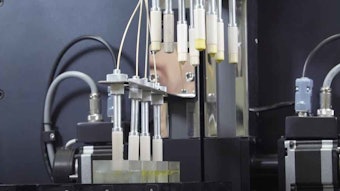Scientists at Queen Mary, University of London have identified the protein precursors behind the peptides that cause muscle contraction or relaxation of echinoderms, which could potentially lead to anti-aging applications. These peptides change the elasticity of collagen in the bodies of sea cucumbers to cause rapid stiffening or softening, and the researchers believe that these findings could lead to new ways to maintain youthful skin.
The research, headed by Prof. Maurice Elphick, PhD, was published in "Protein Precursors of Peptides That Affect the Mechanics of Connective Tissue and/or Muscle in the Echinoderm Apostichopus japonicus," an online article appearing in PLOS One. The team analyzed transcriptome sequence data to identify the protein precursors of six myoactive peptides—SALMFamides Sticho-MFamide-1 and -2, NGIWYamide, stichopin, GN-19 and GLRFA.
The A. japonicus SALMFamide precursor comprises eight putative neuropeptides including both L-type and F-type SALMFamides, which contrasts with previous findings from the sea urchin Strongylocentrotus purpuratus where L-type and F-type SALMFamides are encoded by different genes. The NGIWYamide precursor contains five copies of NGIWYamide but, unlike other NG peptide-type neuropeptide precursors in deuterostomian invertebrates, the NGIWYamide precursor does not have a C-terminal neurophysin domain, indicating loss of this character in holothurians. NGIWYamide was originally discovered as a muscle contractant, but it also causes stiffening of mutable connective tissue in the body wall of A. japonicus, while holokinins (PLGYMFR and derivative peptides) cause softening of the body wall.
The only protein in the sea cucumber containing the holokinin sequence PLGYMFR is an alpha-5 type collagen, suggesting that proteolysis of collagen may generate peptides (holokinins) that affect body wall stiffness in sea cucumbers. This novel perspective on mechanisms of mutable connective tissue in echinoderms will be further investigated to understand the mechanisms themselves, which the research team finds may lead to a new way to plump skin and reduce wrinkles.










